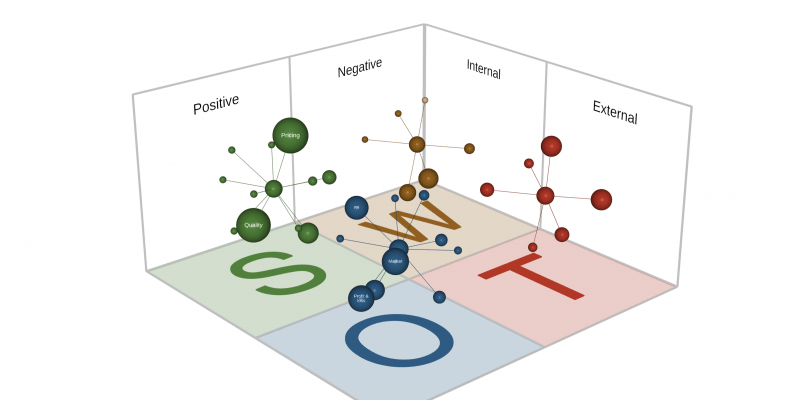
Keep your ducks in a row. Keep an eye out for a better pond. Oh, and stay away from the nasty fox.
What better way to introduce SWOT analysis than with a short and sweet metaphor? SWOT analysis is a vital process that helps a business to evaluate its internal and external environment by identifying strengths, weaknesses, opportunities and threats.
Strengths - Internal positive factors
Weaknesses - Internal negative factors
Opportunities - External positive factors
Threats - External negative factors
Register today to get more from Business West
Register with Business West to be informed of vital business issues, insights and opportunities, and gain access to business guides and content through our resources area.
SWOT analysis is a fantastic process for testing out your ideas. You can undertake an accurate evaluate to determine whether you have come up with a strong and worthwhile idea and whether is suits your project, industry or business environment.
You might discover that, whilst the idea is great, the external environment just isn’t right for it at this moment in time.
Using the SWOT tool within Mind Doodle, you can conduct a SWOT analysis with 3D visualisations of strengths, weaknesses, opportunities and threats.
Did you know 3D SWOT analysis was a possibility? Now you do! Try it for yourself for free here: https://bit.ly/2JIUCkY
During advanced SWOT analysis, you can add a numerical value to each factor you have identified, helping to differentiate between major or minor strengths, weaknesses, opportunities and threats.
This combats a common challenge with SWOT analysis by acknowledging the impact of each factor. The impact is calculated by the importance, the likelihood of occurrence, and whether it is a major or minor factor.
Undertaking advanced SWOT analysis improves accuracy, helping you to form the best strategic direction for your business.
Let’s run through how SWOT analysis works:
SWOT analysis helps you to position your strategic direction because you’re aware of the internal and external factors that affect your business.
With improved business awareness and adaptability, you’ll be primed for change and you can react accordingly. Read more about SWOT analysis here: https://bit.ly/2U0bzMH
Adaptability
You gain an advantage by being aware of all possibilities, making it easier to adapt. How well you predict the course of your actions, in addition to how much you know about the situation, can be summarised using the acronym VUCA (volatility, uncertainty, complexity, and ambiguity). Read more about it here - https://hbr.org/2014/01/what-vuca-really-means-for-you. In today’s VUCA business environment, awareness is key.
SWOT analysis can help you:
- Take precautions in case threats emerge
- Advance quickly and capitalise on opportunities
- Sustain and develop internal strengths
- Work on improving the weaknesses
Reallocation of resources
SWOT analysis allows you to allocate your resources appropriately and effectively because you know the areas that need work. This is made even easier by the weighting tool in Mind Doodle, which generates 3D data visualisation showing which factors could have the biggest impact.
Competitive positioning
Another great use of SWOT is for competitor analysis. You can see new gaps in the market and position your organisation appropriately, giving your business a competitive advantage.
Using SWOT analysis, you can keep your ducks in a row by being aware of your internal business environment, keep an eye out for a better pond by monitoring external opportunities and stay away from the nasty fox by identifying external threats to your business.
Read more about advanced SWOT analysis here: https://bit.ly/2OtbLhp
Sign up for free to start using Mind Doodle's SWOT tool here: https://bit.ly/2U2QNvB
- Log in to post comments